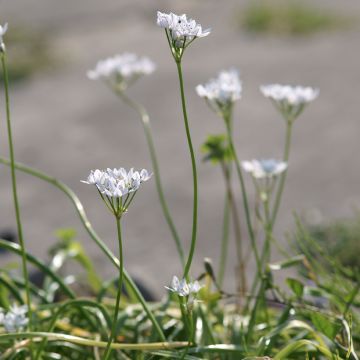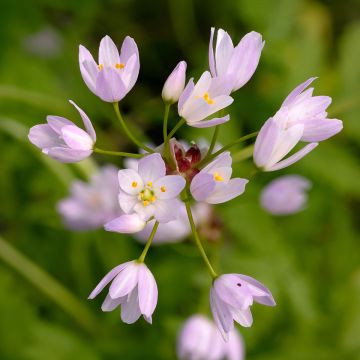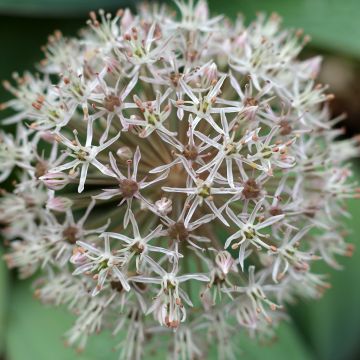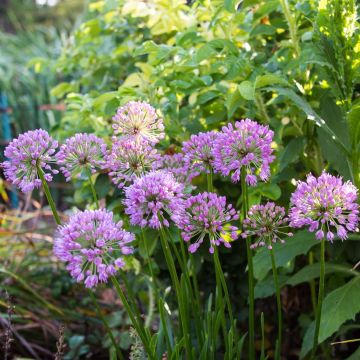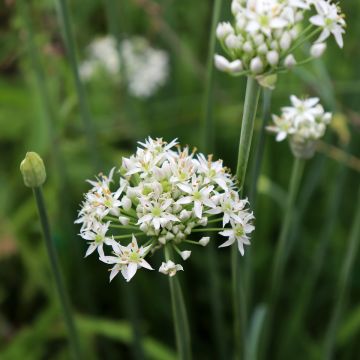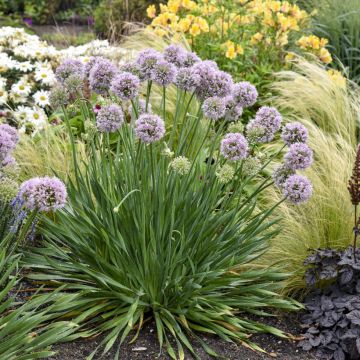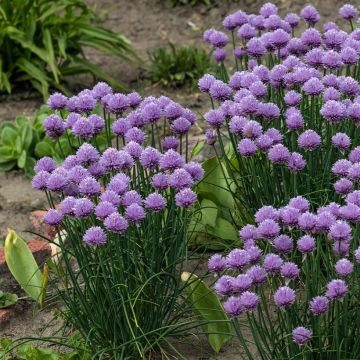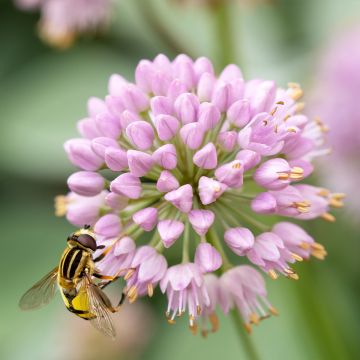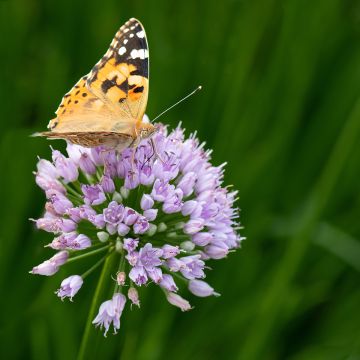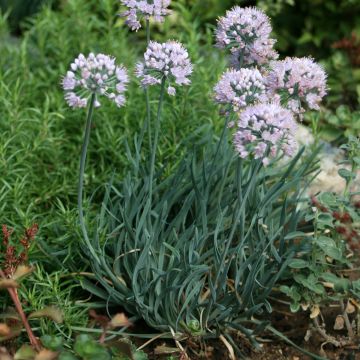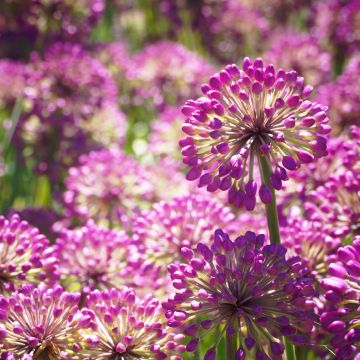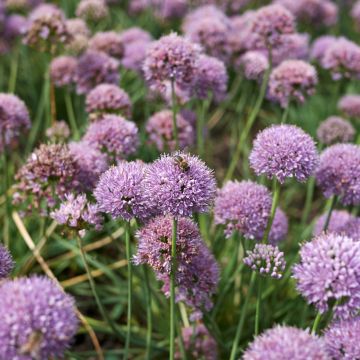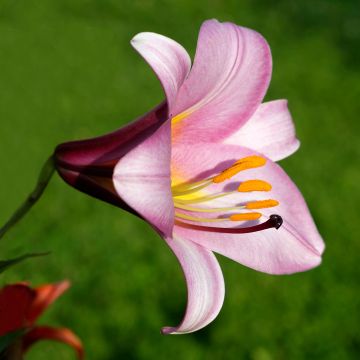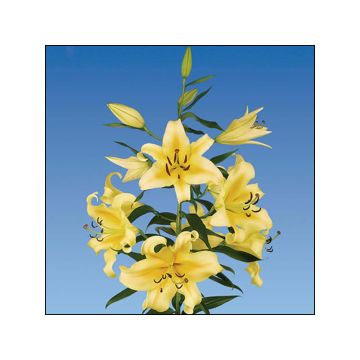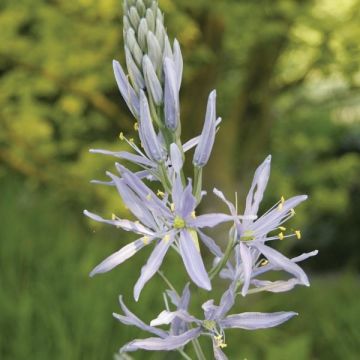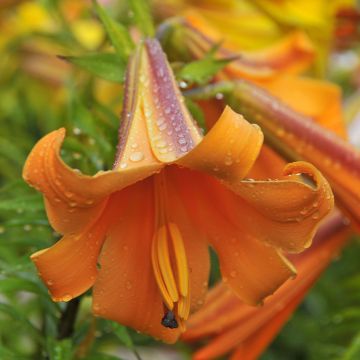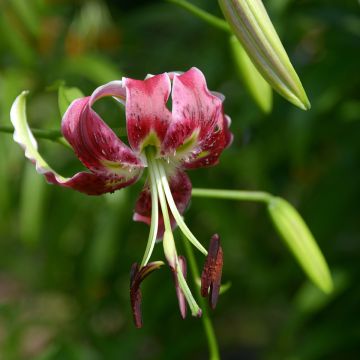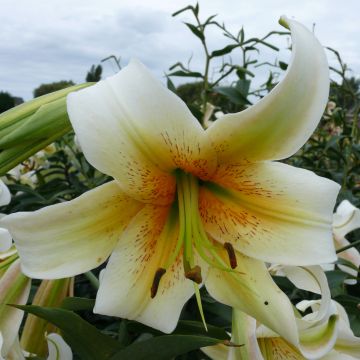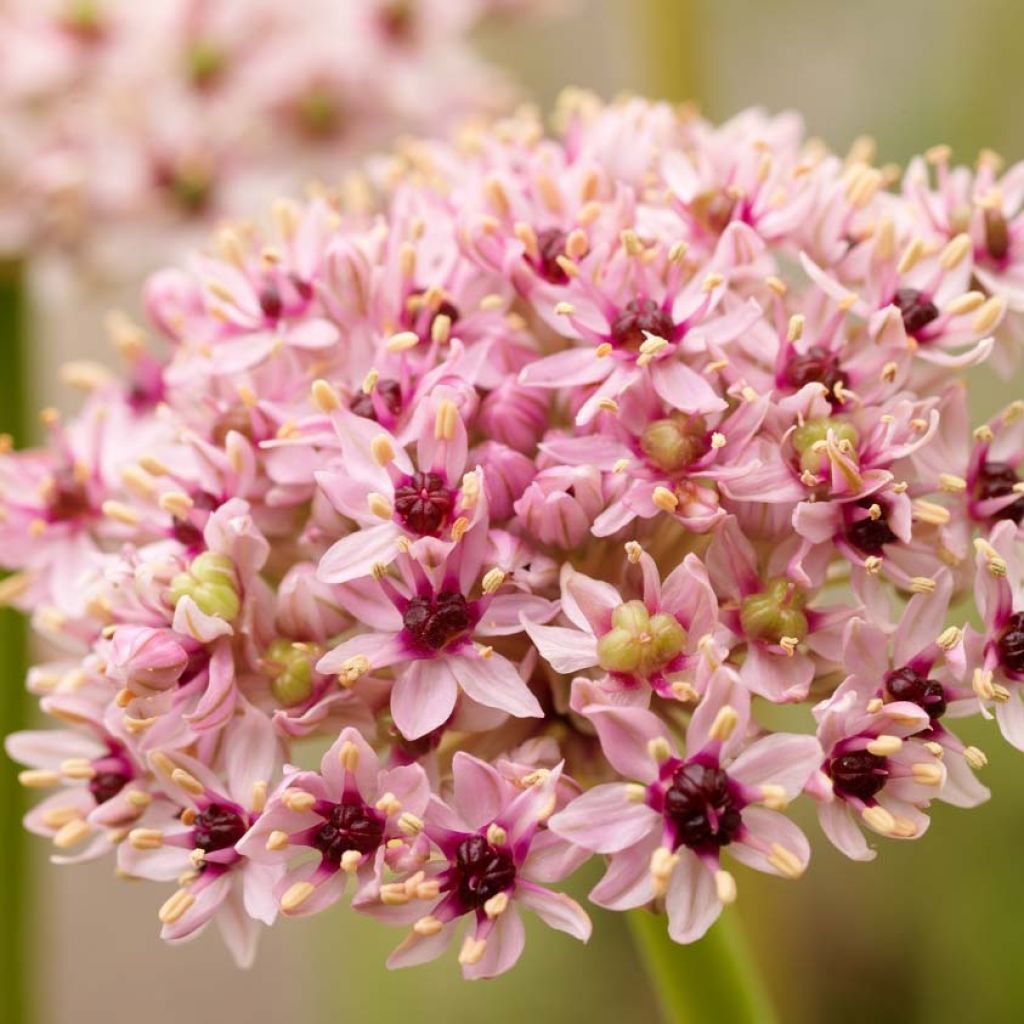

Allium Red Eye
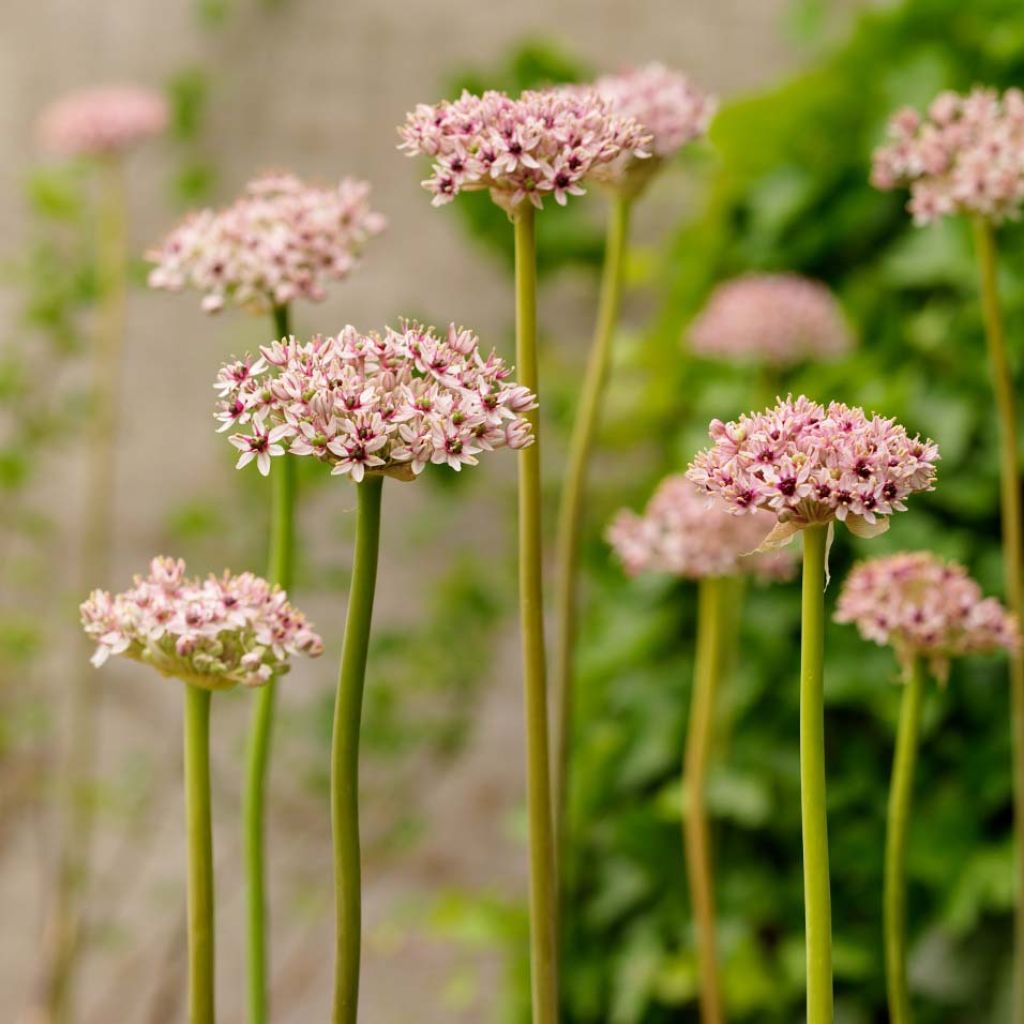

Allium Red Eye
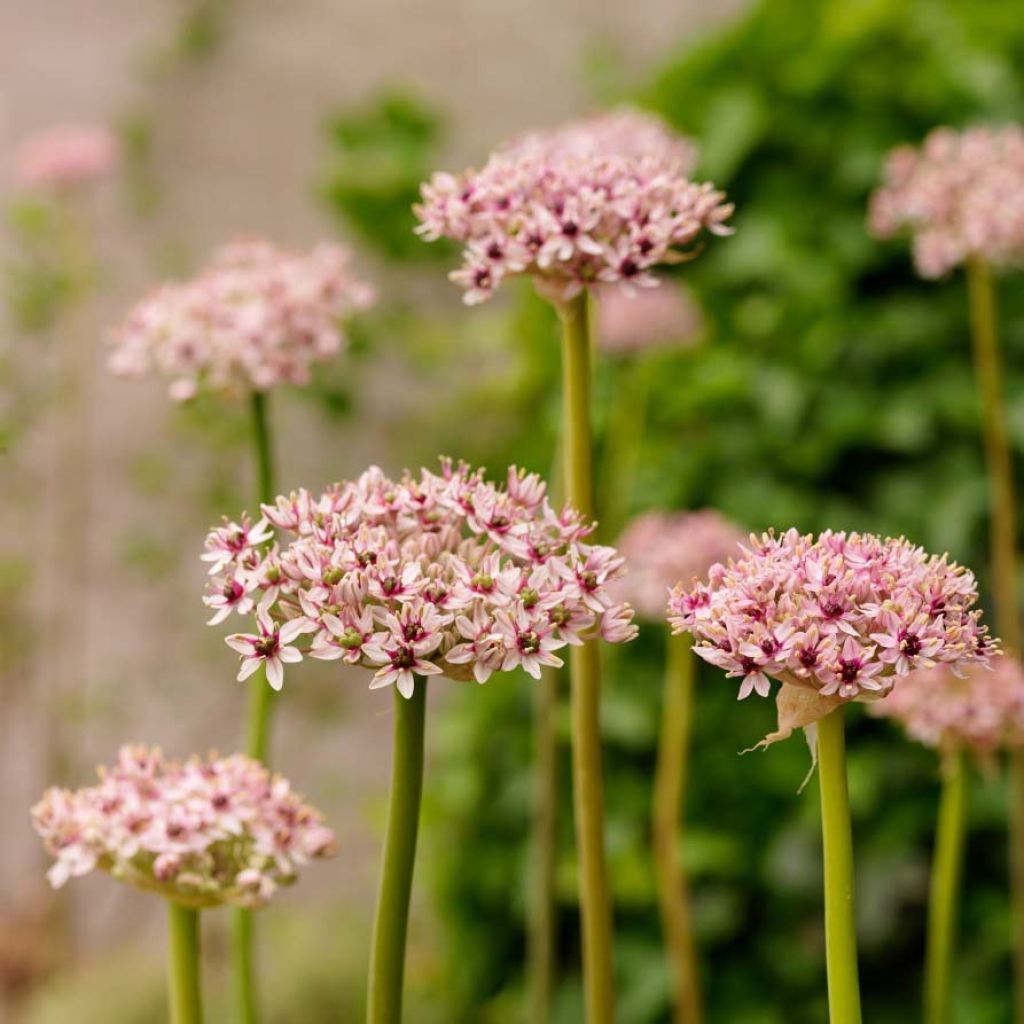

Allium Red Eye
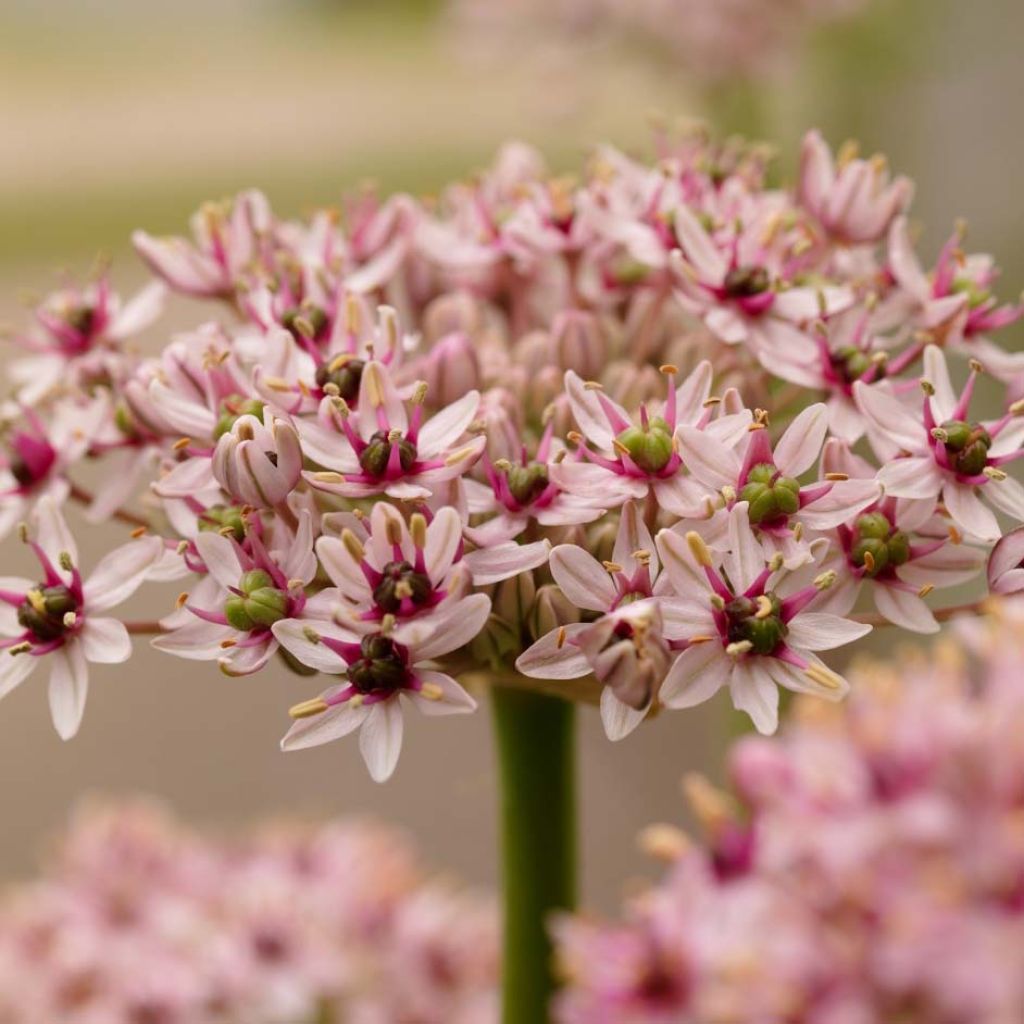

Allium Red Eye
Allium Red Eye
Allium Red Eye
Ornamental Onion, Flowering Garlic
At the moment, it is difficult to judge as they have not yet flowered.
Sophie C., 23/05/2018
Why not try an alternative variety in stock?
View all →This plant carries a 6 months recovery warranty
More information
We guarantee the quality of our plants for a full growing cycle, and will replace at our expense any plant that fails to recover under normal climatic and planting conditions.
From €5.90 for pickup delivery and €6.90 for home delivery
Express home delivery from €8.90.

Does this plant fit my garden?
Set up your Plantfit profile →
Description
Allium 'Red Eye' is a recent ornamental garlic. This beautiful novelty, similar to the 'Silver Spring' variety but more colourful, produces large flat umbels in spring, which appear pale-pink when viewed from a distance. They are composed of small white-cream flowers veined with cherry-red, surrounding a dark purple heart. These large fragrant flowers are stunning in the garden alongside dark tulips. They are also perfect for creating fresh or dried bouquets.
'Red Eye' belongs to the Amaryllidaceae family, just like leeks, onions, and garlic in our vegetable gardens. Its bulb produces wide, linear, green-grey leaves in spring, which are often still present during flowering, contrary to what is observed in most ornamental garlic. The flowering occurs in May/June. Rigid and sturdy stems, 60cm (24in) in height, carry the inflorescences, which are slightly flattened hemispherical umbels. These umbels measure approximately 10cm (4in) in diameter. They are made up of small star-shaped flowers with 6 white-cream petals. Each petal is traversed by a dark pink median line, diving into the purple-violet centre of the flower. This distribution of colours gives the inflorescence a silver-pink appearance. The flowers emit a sweet scent that attracts a large number of pollinating insects.
Like many garlics, Allium 'Red Eye' likes moist but well-drained soil during its growth period and adapts well to summer drought, which corresponds to the bulb's resting period. It thrives in very sunny beds and rockeries, as well as in a flower bed or a large pot on a patio. Its sculptural aspect and architectural habit bring a lot of personality to the garden. Use this irresistibly attractive ornamental garlic as a focal point in a contemporary or country-style bed, especially in a dry garden. It will express its full potential when planted in groups of at least 10 to 15 bulbs. For example, combine it with 'Black Hero' tulips, pink valerians, or purple scabious (Scabiosa atropurpurea). Plant it also alongside purple and white flowers: wallflowers, columbines, and knotweeds.
Allium pairs well with roses and chamomile in beds, or carrots and beets in the vegetable garden. It can repel aphids and other harmful insects. However, it seems to inhibit the growth of legumes. This plant is a poor companion for alfalfa and sainfoin, for example. Allium, like its relatives, is a medicinal plant.
Report an error about the product description
Allium Red Eye in pictures
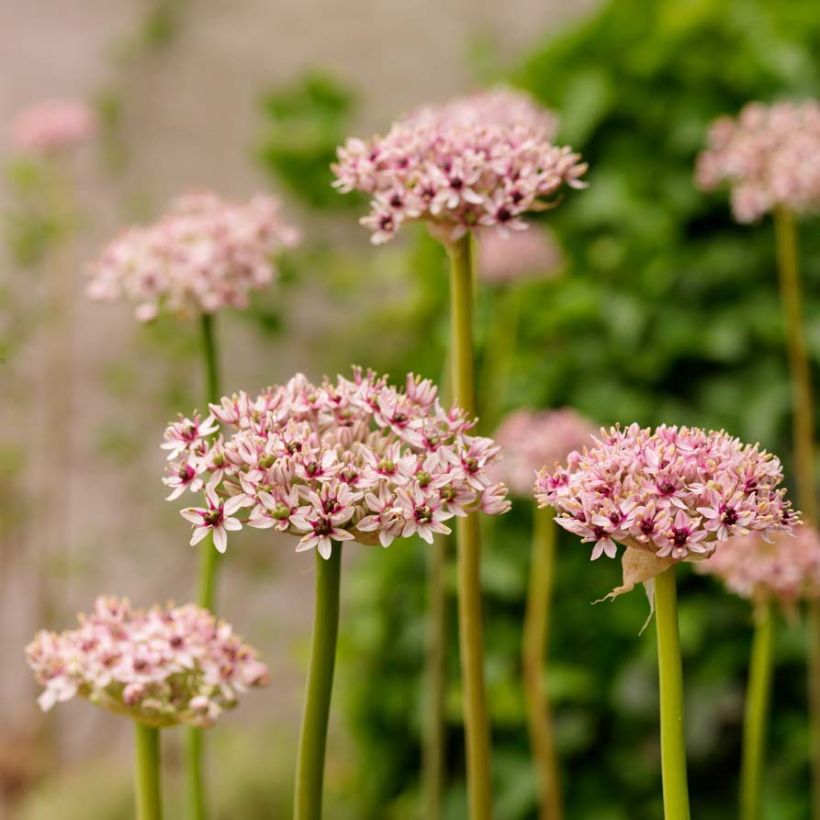

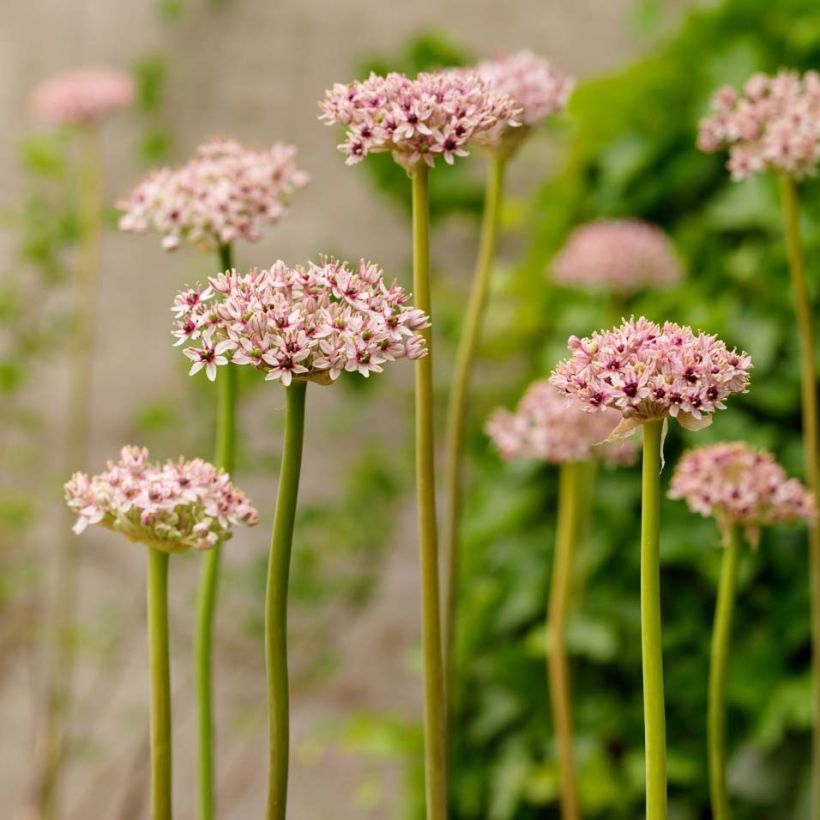

Plant habit
Flowering
Foliage
Botanical data
Allium
Red Eye
Alliaceae - Liliaceae
Ornamental Onion, Flowering Garlic
Cultivar or hybrid
Other Allium
Planting and care
Alliums are easy-to-grow plants in light soils that do not retain excessive moisture. Plant them preferably before the end of October so that they have time to establish. They fear humidity and waterlogged soils in winter or summer. Give them a sunny spot in well-drained soils, even rocky and chalky or sandy ones. Plant them 10cm (4in) deep, spaced 10cm (4in) apart. They are undemanding, but do prefer poor soils. The foliage should not be cut before it turns completely yellow, in order to allow the bulbs to replenish their reserves. Once acclimatised and established, this allium is quite resistant to drought. If the conditions are met, this bulbous plant requires no particular maintenance, but does not like the root competition from other perennials. Alliums are sturdy plants and not very susceptible to diseases if the conditions are met. They multiply slowly by producing bulb offsets, eventually forming beautiful clumps.
Planting period
Intended location
Care
-
, onOrder confirmed
Reply from on Promesse de fleurs
Spectacular bulbs
Haven't found what you were looking for?
Hardiness is the lowest winter temperature a plant can endure without suffering serious damage or even dying. However, hardiness is affected by location (a sheltered area, such as a patio), protection (winter cover) and soil type (hardiness is improved by well-drained soil).

Photo Sharing Terms & Conditions
In order to encourage gardeners to interact and share their experiences, Promesse de fleurs offers various media enabling content to be uploaded onto its Site - in particular via the ‘Photo sharing’ module.
The User agrees to refrain from:
- Posting any content that is illegal, prejudicial, insulting, racist, inciteful to hatred, revisionist, contrary to public decency, that infringes on privacy or on the privacy rights of third parties, in particular the publicity rights of persons and goods, intellectual property rights, or the right to privacy.
- Submitting content on behalf of a third party;
- Impersonate the identity of a third party and/or publish any personal information about a third party;
In general, the User undertakes to refrain from any unethical behaviour.
All Content (in particular text, comments, files, images, photos, videos, creative works, etc.), which may be subject to property or intellectual property rights, image or other private rights, shall remain the property of the User, subject to the limited rights granted by the terms of the licence granted by Promesse de fleurs as stated below. Users are at liberty to publish or not to publish such Content on the Site, notably via the ‘Photo Sharing’ facility, and accept that this Content shall be made public and freely accessible, notably on the Internet.
Users further acknowledge, undertake to have ,and guarantee that they hold all necessary rights and permissions to publish such material on the Site, in particular with regard to the legislation in force pertaining to any privacy, property, intellectual property, image, or contractual rights, or rights of any other nature. By publishing such Content on the Site, Users acknowledge accepting full liability as publishers of the Content within the meaning of the law, and grant Promesse de fleurs, free of charge, an inclusive, worldwide licence for the said Content for the entire duration of its publication, including all reproduction, representation, up/downloading, displaying, performing, transmission, and storage rights.
Users also grant permission for their name to be linked to the Content and accept that this link may not always be made available.
By engaging in posting material, Users consent to their Content becoming automatically accessible on the Internet, in particular on other sites and/or blogs and/or web pages of the Promesse de fleurs site, including in particular social pages and the Promesse de fleurs catalogue.
Users may secure the removal of entrusted content free of charge by issuing a simple request via our contact form.
The flowering period indicated on our website applies to countries and regions located in USDA zone 8 (France, the United Kingdom, Ireland, the Netherlands, etc.)
It will vary according to where you live:
- In zones 9 to 10 (Italy, Spain, Greece, etc.), flowering will occur about 2 to 4 weeks earlier.
- In zones 6 to 7 (Germany, Poland, Slovenia, and lower mountainous regions), flowering will be delayed by 2 to 3 weeks.
- In zone 5 (Central Europe, Scandinavia), blooming will be delayed by 3 to 5 weeks.
In temperate climates, pruning of spring-flowering shrubs (forsythia, spireas, etc.) should be done just after flowering.
Pruning of summer-flowering shrubs (Indian Lilac, Perovskia, etc.) can be done in winter or spring.
In cold regions as well as with frost-sensitive plants, avoid pruning too early when severe frosts may still occur.
The planting period indicated on our website applies to countries and regions located in USDA zone 8 (France, United Kingdom, Ireland, Netherlands).
It will vary according to where you live:
- In Mediterranean zones (Marseille, Madrid, Milan, etc.), autumn and winter are the best planting periods.
- In continental zones (Strasbourg, Munich, Vienna, etc.), delay planting by 2 to 3 weeks in spring and bring it forward by 2 to 4 weeks in autumn.
- In mountainous regions (the Alps, Pyrenees, Carpathians, etc.), it is best to plant in late spring (May-June) or late summer (August-September).
The harvesting period indicated on our website applies to countries and regions in USDA zone 8 (France, England, Ireland, the Netherlands).
In colder areas (Scandinavia, Poland, Austria...) fruit and vegetable harvests are likely to be delayed by 3-4 weeks.
In warmer areas (Italy, Spain, Greece, etc.), harvesting will probably take place earlier, depending on weather conditions.
The sowing periods indicated on our website apply to countries and regions within USDA Zone 8 (France, UK, Ireland, Netherlands).
In colder areas (Scandinavia, Poland, Austria...), delay any outdoor sowing by 3-4 weeks, or sow under glass.
In warmer climes (Italy, Spain, Greece, etc.), bring outdoor sowing forward by a few weeks.

































